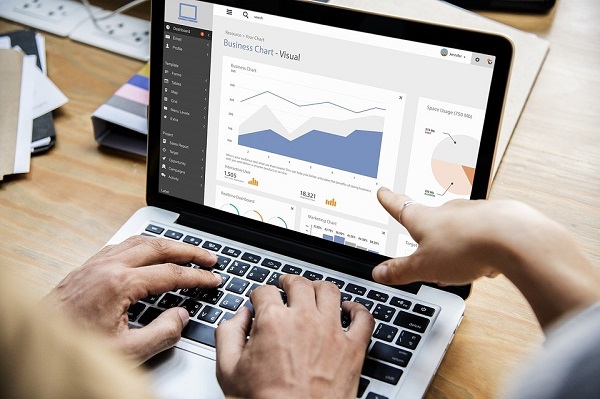Mobile devices have quickly reached the top of the list as the most popular platform to browse the web on. Mobile phones are cheaper than purchasing a desktop (especially in developing countries who weren’t a part of the desktop dominated phase) and mobile devices are used by most people worldwide. With the rise of mobile phones comes an explosion of the individual data you can pull for users (who are less likely to share their devices) and an increase in the amount of browsing people do. That leads to some fantastic, in-depth, individualized data; which can be a little tough to wade through.
Instead of ignoring the explosion of user information from mobile devices, embrace it. Cannonball dive in and find your users. Don’t be afraid of the tidal wave of user information coming from mobile browsers. It’s the future of your site.
Are mobile phones the dominant platform?
Mobile phones are the dominant platform (meaning if your company isn’t on mobile, you are missing out). With mobile platform dominance, there are more people online, more of the time. This is wonderful for sites who want to be read more and are interested in harnessing the information power of casual readers.
Even if you are looking at harnessing domestic audiences, there’s a consistently growing mobile audience stateside. Even the mediocrely reviewed iPhone 7 has boosted sales for Apple and mobile use has consistently risen in America. That means that there is no slowing down for mobile devices as a dominant platform. If anything, people will begin the depend on them more and more, ever increasing the data pool you have to swim through.
Why mobile users create more data AND more individualized data
Mobile devices offer more access to the internet, they are a cheaper, more readily available platform, plus mobile users don’t share their device in the same way a desktop data might encompass several users. Mobile users also spend a lot more time on their devices. That means that they produce a lot more data and that the data produced from tracking them is more individualized (instead of being for multiple users on the same device). This can be very helpful when targeting ads, laser-targeting your users, or just trying to improve your onsite experience.
How to swim in data explosion
Swimming in the giant data pool that comes out of user tracking can seem impossible. Just diving into your Google Analytics and Search Console can overwhelm you (if you’ve been collecting data for a while). Slowly diving into the data pool one toe at a time can help make it more manageable, especially if you start with a cannon-ball look (that means diving in deep to define your primary user before dipping into the different sub-categories that your users fill).
Cannonball Look at the Data Pool
Start with a cannonball dive:
-Who are most of your users?
-Where do they start on your site?
-How do they find you?
-What are they looking for?
Taking a cannonball dive into your users can help you determine where you should start dipping your toes in. It’ll give you a profile of who your users are, how they find you, and what sort of direction you can move with them online.
Segmenting the mountain of data available to you can help you do those sort of deep dives. Your primary customer might be a thirty-something female who gets to your site from Google and likes to read about real estate.
Dip a Toe In
Once you know who your customer is, how they are getting to you, and where they land on site, you can explore their offline and online path to try and expand and retain your traffic. With this information in your analytics, gathering and categorizing information about your customers, tracking URLs that will help track dark social, or offering coupons for voluntary surveys.
Who are your users?
Finding your users is a vital part of knowing where to move forward. It tells you where your customers are, who they are, and what they like. Knowing more about your customers is the start to grow your consumer base. Knowing all about your customer base will help you determine where you should go forward. Just like regular data, bias can sneak into your search data, so make sure you stick to the raw data and don’t go diving for what you think should be there.
What are they doing onsite?
What your users are doing when they are on your site is a huge deal. You can find what they are doing by tracking their general behavior flow in G-Analytics or by looking at a page-by-page heat map. Once you begin searching, there’s a never-ending labyrinth of information that you can use to help pull who is going to what pages (and what they might be looking for there).
For example, you might find that your thirty-something female user who loves Facebook is only going to your main pages, but that more informational pages are being used by a slightly younger crowd who interacts with other forms of social media. Building out your content to more accurately address what the users are looking for on there (and how to funnel them to the converting pages) will help you reach a larger market.
How did they find you?
Playing with how people find you and how to keep them coming back is a hard task. Making your pages useable for your primary consumers should be your goal, but a Twitter-specific informational post aimed at the interests of your Twitter-referral users never hurt anyone.
Aiming your content around how people find you and creating funnels around those tracks could really help you harness your users more effectively. Dipping your toe in by looking at where users are coming from, how you can make their experience on site more tailored to what they came there for (perhaps the Twitter users interact with shorter posts with images and Facebook users like to read). Tailoring the tracks that your users are coming on site will help you keep your users and reduce bounce. And once you dip your toe in, there’s no end to the amount of adjusting you can do to make your site better.
How can you help them?
What are your users coming onsite for?
Are you helping your users onsite? Answering this question will help you dive through the pool of data and know that what you are doing is easing the way for your users to get the information and products they need from your site. If everything is focused around your primary users, jet skiing across the ocean of data mobile pulls is just icing on the cake.
Mobile’s dominance as a browsing platform has caused a surge of available data. Not only is there more data available about your online users, but it’s better data, allowing you to build accurate user profiles. If you’re just starting out, building your site around those primary users will help you grow traffic, and keep the traffic you do have, on site, for longer, and doing more productive things. Digging into the ocean of data is great if you take it one toe at a time, and keep your primary users in mind. Don’t segment your site too much.










![7 data-driven ways to optimize your online store for mobile [Infographic]](https://crayondata.ai/wp-content/uploads/2019/11/optimize-1.jpg)


![Top tips and tricks to improving your customer experience [Infographic]](https://crayondata.ai/wp-content/uploads/2019/01/customer-journey-1.jpg)









